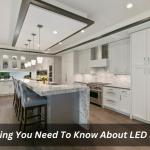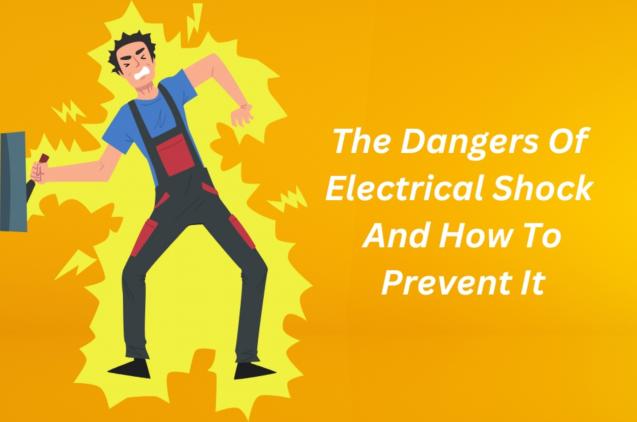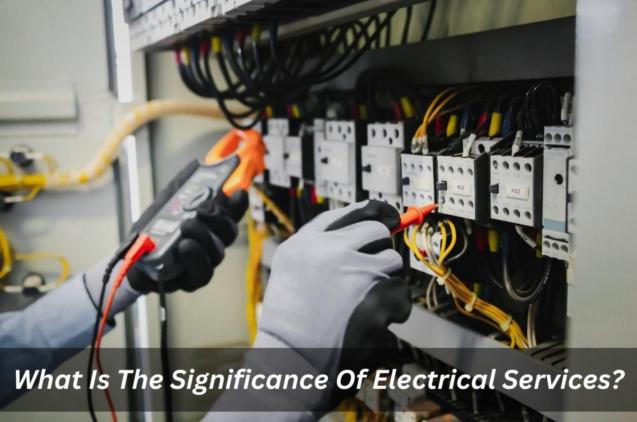
Everything You Need To Know About LED Lighting
By Electrability|December 15, 2022
LED lighting products have gained popularity over the years because of their energy efficiency, durability, and affordability. But did you know that there’s much more to LED light bulbs than meets the eye?
There are several reasons why LED lighting is becoming the standard for any residential projects and office applications. Lighting solutions vary widely depending on the type of space you live in. For starters, LED provides better colour rendering and greater brightness levels. This means they produce realistic colours and brighter images.
Many lighting designers highly recommend buying LED light fittings in most residential and commercial projects.
They also last much longer than conventional lighting because of their ability to withstand shock and vibration. In addition to these advantages, LED lights consume less energy than other forms of lighting.
There are various types of LEDs out there, each having its own pros and cons. In this article, we talk about some LED lights that can greatly improve your home or office environment.
LED Lighting – The Simple Explanation
The simple explanation as to what LED lighting is is that it is an acronym for “light emitting diode.” It is a semiconductor material that produces visible light when electricity passes through it. This light is not harmful in any way. In fact, it is one of the most efficient forms of light available today.
It emits a different colour of light compared to traditional incandescent bulbs. The reason why they have become so popular in recent times is due to their long life expectancy and low maintenance cost.
This means that no bulb replacement is required; just simply buy them when they run out. They also save quite a bit on electricity bills since they consume less power. These days, LED lights are available in several different colours such as red, green, blue, yellow, white, amber etc.
Types Of Led Lights
When it comes to choosing which type of LED lighting you should use, the decision will depend on your needs. There are two main types: LED downlights and spotlights. A downlight is usually used with ceiling fans or recessed fixtures. A spotlight is usually used for point sources like lamps.
You may wish to consider using multiple lights if you need extra illumination. Or you may want all your lights to be controlled by one switch. If you have both options available, then you can choose from a range of LED lights.
Downlights
Downlights offer excellent lighting at a reasonable price. They are great for areas where you don’t need a lot of coverage but want to add a little ambience to your room. Downlights come in many styles and shapes and are generally ideal for ceilings and floors.
If you prefer a more focused light, then a spotlight is probably right for you. Many people prefer to use spotlights over downlights because they create sharper shadows. Some of the best spotlight brands out there include:
It depends on whether you want professional installation services performed by a qualified electrician in Sydney. In most cases, it's not required, however, having a licensed electrician perform the work ensures that proper safety standards are met, and also allows you to obtain the certificate needed to sell the property when you move.
If you want excellent service for all your electrical work, consider hiring electrical services in Sydney NSW, they offer a different range of electrical jobs.
There are several reasons why LED lighting is becoming the standard for any residential projects and office applications. Lighting solutions vary widely depending on the type of space you live in. For starters, LED provides better colour rendering and greater brightness levels. This means they produce realistic colours and brighter images.
Many lighting designers highly recommend buying LED light fittings in most residential and commercial projects.
They also last much longer than conventional lighting because of their ability to withstand shock and vibration. In addition to these advantages, LED lights consume less energy than other forms of lighting.
There are various types of LEDs out there, each having its own pros and cons. In this article, we talk about some LED lights that can greatly improve your home or office environment.
LED Lighting – The Simple Explanation
The simple explanation as to what LED lighting is is that it is an acronym for “light emitting diode.” It is a semiconductor material that produces visible light when electricity passes through it. This light is not harmful in any way. In fact, it is one of the most efficient forms of light available today.
It emits a different colour of light compared to traditional incandescent bulbs. The reason why they have become so popular in recent times is due to their long life expectancy and low maintenance cost.
This means that no bulb replacement is required; just simply buy them when they run out. They also save quite a bit on electricity bills since they consume less power. These days, LED lights are available in several different colours such as red, green, blue, yellow, white, amber etc.
Types Of Led Lights
When it comes to choosing which type of LED lighting you should use, the decision will depend on your needs. There are two main types: LED downlights and spotlights. A downlight is usually used with ceiling fans or recessed fixtures. A spotlight is usually used for point sources like lamps.
You may wish to consider using multiple lights if you need extra illumination. Or you may want all your lights to be controlled by one switch. If you have both options available, then you can choose from a range of LED lights.
Downlights
Downlights offer excellent lighting at a reasonable price. They are great for areas where you don’t need a lot of coverage but want to add a little ambience to your room. Downlights come in many styles and shapes and are generally ideal for ceilings and floors.
- Spotlights – A spotlight illuminates a specific area such as under a table lamp, a bedside lamp, a reading lamp, kitchen cabinets, etc.
- Indirect lights – An indirect light provides soft diffuse general-purpose lighting rather than direct light. Think of them as being between a ceiling fixture and a wall sconce.
- Table/floor spots – A floor spotlights up a particular section of a room while a table spot shines a light toward a surface.
- LED Strip Lighting - An illuminated display technology that uses light-emitting diodes (LEDs) for illumination instead of traditional lamps or neon tubes.
- LED Panel Lights - These are used in many applications including home lighting systems, automotive lighting systems, commercial display systems, portable displays, signage, decorative lighting fixtures, etc.
- Flood lights - These are light bulbs that use a fluorescent tube but have glass envelopes so they can be mounted on poles outside in order to illuminate dark places. They are usually used for outdoor lighting.
If you prefer a more focused light, then a spotlight is probably right for you. Many people prefer to use spotlights over downlights because they create sharper shadows. Some of the best spotlight brands out there include:
- Spotlight bulbs – Available in many sizes and wattages, these work well for illuminating smaller areas.
- Linear lights – Offered in a variety of lengths, these are good for accentuating walls and creating focal points in small spaces.
- Cylinder bulbs – Ideal for large rooms, these are often part of the decorative decor.
- Sconces – Usually mounted above a door frame or mantlepiece, this has been around for centuries and is still very much a classic design.
It depends on whether you want professional installation services performed by a qualified electrician in Sydney. In most cases, it's not required, however, having a licensed electrician perform the work ensures that proper safety standards are met, and also allows you to obtain the certificate needed to sell the property when you move.
If you want excellent service for all your electrical work, consider hiring electrical services in Sydney NSW, they offer a different range of electrical jobs.



